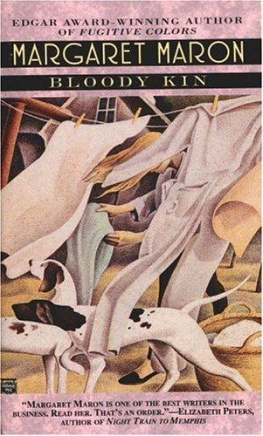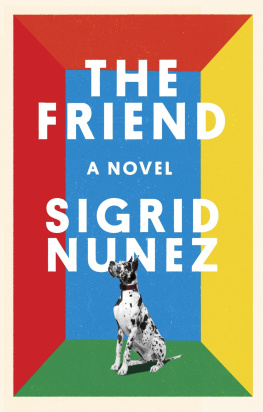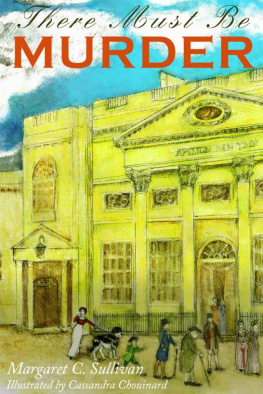Margaret Maron - One Coffee With
Here you can read online Margaret Maron - One Coffee With full text of the book (entire story) in english for free. Download pdf and epub, get meaning, cover and reviews about this ebook. genre: Detective and thriller. Description of the work, (preface) as well as reviews are available. Best literature library LitArk.com created for fans of good reading and offers a wide selection of genres:
Romance novel
Science fiction
Adventure
Detective
Science
History
Home and family
Prose
Art
Politics
Computer
Non-fiction
Religion
Business
Children
Humor
Choose a favorite category and find really read worthwhile books. Enjoy immersion in the world of imagination, feel the emotions of the characters or learn something new for yourself, make an fascinating discovery.

- Book:One Coffee With
- Author:
- Genre:
- Rating:5 / 5
- Favourites:Add to favourites
- Your mark:
- 100
- 1
- 2
- 3
- 4
- 5
One Coffee With: summary, description and annotation
We offer to read an annotation, description, summary or preface (depends on what the author of the book "One Coffee With" wrote himself). If you haven't found the necessary information about the book — write in the comments, we will try to find it.
One Coffee With — read online for free the complete book (whole text) full work
Below is the text of the book, divided by pages. System saving the place of the last page read, allows you to conveniently read the book "One Coffee With" online for free, without having to search again every time where you left off. Put a bookmark, and you can go to the page where you finished reading at any time.
Font size:
Interval:
Bookmark:

Margaret Maron
One Coffee With
The first book in the Sigrid Harald series, 1981
For Joe
1
FEW institutions of higher learning are content that their faculties do nothing but teach. In the name of 'academic community', Administration arranges committees, faculty-student teas, receptions to meet the newest trustee, and interdisciplinary seminars. Departments that submit to this nonsense unquestioningly are rewarded with buildings of their own or, at the very least, whole floors of contiguous classrooms and well-furnished offices.
In every college, though, there is always one department that doesn't give a damn for academic community, that adopts a laissez-faire attitude toward Administration's extracurricular entanglements and subsequently finds itself jammed higgledy-piggledy into the college's leftover spaces. The Art Department at Vanderlyn College was so thoroughly a case in point that when rumors of murder first spread across campus that spring morning, the other less flamboyant disciplines sat back in smugc onviction that such a calamity could never happen in their orderly domains. Psychology alluded darkly to the dangers of indulging Freudian aggressions. Chemistry proclaimed itself appalled that lethal substances had been treated with such casual negligence, while Home Ec. polished its elegant china tea service and managed to imply that that's what came of drinking cafeteria coffee from a Styrofoam cup.
2
THE day began normally enough. Although financially besieged on all sides. New York still offered her resident, subway-riding children an education that was virtually free. Vanderlyn was one of eleven senior colleges that formed the City University of New York, and its enrollment alone was more than forty thousand, counting undergraduate, graduate and evening students.
Built in the late nineteenth century when the city still had open spaces around its edges, Vanderlyn College occupied what was now a rather expensive slice of urban real estate two blocks wide by eight blocks long. It resembled any other institution of higher learning, except that none of its stone or brick buildings was a dormitory or faculty residence. There was the obligatory grassy common crossed by patterned brick walks with a large fountain in its center; there were tall oaks and maples and a curtain of ivy to soften the north wall oft he ugly old late-Victorian library; there was even a postage-stamp-sized athletic field tucked in next to the East River and a graceful trellised promenade, draped in wisteria, from which one could watch the river traffic float by while catching up on obscure battles in the Hundred Years War.
Spring sunlight fell on sleepy-eyed students straggling up from the subway's depths and through the iron gates to eight-o'clock classes, while on the third floor of Van Hoeen Hall, Assistant Professor Marvin Lowenheim (B.A., Pittsburgh; M.A., Michigan; Ph.D., Columbia) readied himself to face a cowed class of freshmen. Years of conducting English Composition 1.2 at eight o'clock in the morning had transformed a gentle Spenser scholar into a tyrannical martinet, who frowned as he distributed rigorously graded compositions.
"It seems we shall need more drill on 'Unity and Coherence in Paragraph Construction,'" he told them grimly.
Another ordinary Wednesday morning had begun.
The Art Department began Wednesday morning normally enough by following its own eccentric course. Just after eight o'clock a large open truck arrived at the side of Van Hoeen Hall by way of the service road that circled the campus. From the fourth-floor window above the truck, a thick steel bar extended itself hydraulically. A heavy-duty block-and-tackle apparatus was attached to its end, and as a steel cable was let down to the truck bed, a small crowd gathered to watch the fun.
The driver of the truck was a wiry young black man who wore faded slacks, a ragged sweat shirt and expensive polarized sunglasses. He scrambled out of the cab and onto its top to direct a pickup crew composed of his two best students and several coveralled workmen from Buildings and Grounds.
"Watch it, baby!" he yelled. "The padding's slipped, and the cable's going to scar the H."
The girl student, redheaded, freckled and agile in beat-up sneakers and blue jeans, readjusted the padding.
"You're acting like a nervous daddy in an obstetrics ward, Sam," she gibed.
"Quit worrying. We haven't lost a piece of sculpture yet."
"Nor a sculptor," grinned her classmate, a tall blond youth, who stood in the open window above, awaiting his instructor's signal to haul away.
Sam Jordan (Instructor, Sculpture and Predental) was not amused. He personally checked the cable's fastening and secured the guy rope, which he tossed to one of the workmen standing on the ground. Then he climbed back up to his perch on the truck cab and anxiously surveyed the scene.
"Okay, take it up, but for crissake go easy," he commanded.
Slowly and ponderously the heavy steel object rose into the air. Sunlight glittered on its mirror-bright surfaces, then gasps followed by snickers arose from the surrounding loungers as they realized that the piece of sculpture consisted of four six-foot-tall letters welded together into a graphic expletive whose meaning was totally at variance with the sculpture's immaculate surface sheen.
"Hey, man! More tension of the guy rope!" Jordan shouted as the steel letterss wung too near Van Hoeen's rough stone wall.
Up past the first floor, then past the second, floated the massive word.
"What's going on here?" suddenly demanded a querulous voice.
Sam Jordan looked down to see the deputy chairman of his department, Professor Riley Quinn, regarding the operation with distaste.
"You speaking to me?" he asked belligerently from atop the truck's cab.
"Ah, Jordan. Of course!" said Professor Quinn with acid geniality. "I should have recognized this newest addition to your oeuvre. Polished steel! Does this represent a shift away from-let's see now-I believe you called it'the uncompromised honesty' of black iron?"
The deputy chairman was of medium height and wore a hat that shaded his eyes quite as effectively as Jordan 's sunglasses. He was always exquisitely groomed and tailored and, even when physically looking up at someone, managed to give the impression of looking down his nose. He was doing it now, a sardonic smile on his lips as he said, "I thought I should make sure this was a legitimatep iece being taken up to the gallery." He paused two beats. "Nevertheless, don't let me interrupt you."
Before Jordan could find a reply. Professor Quinn noticed that the workman on the guy rope had slackened his hold, and that the sculptured word hovered dangerously close to the wall.
"You there! Watch what you're doing!" he ordered sharply.
The workman turned and glared at him. "Who you think you bossing what to do?" he cried in heavily accented anger.
"Oh, God!" groaned Quinn, recognizing nemesis in brown coveralls.
"Yah! You should call on God to forgive you!" agreed the workman.
"Listen, you dumb hunky! Watch what you're doing!" cried the suddenly enraged Quinn.
"You call me hunky! You dare, you-you thieving fatty!"
Sam Jordan was startled by the usually urbane Riley Quinn's loss of composure. This supposedly lofty academic had spoken like a common guttersnipe. But the situation was too perilous to worry about minor cracks in the deputy chairman's faade.
"What the hell's going on!" he yelled at the workman. "Will you watch what you're doing?"
Next pageFont size:
Interval:
Bookmark:
Similar books «One Coffee With»
Look at similar books to One Coffee With. We have selected literature similar in name and meaning in the hope of providing readers with more options to find new, interesting, not yet read works.
Discussion, reviews of the book One Coffee With and just readers' own opinions. Leave your comments, write what you think about the work, its meaning or the main characters. Specify what exactly you liked and what you didn't like, and why you think so.






